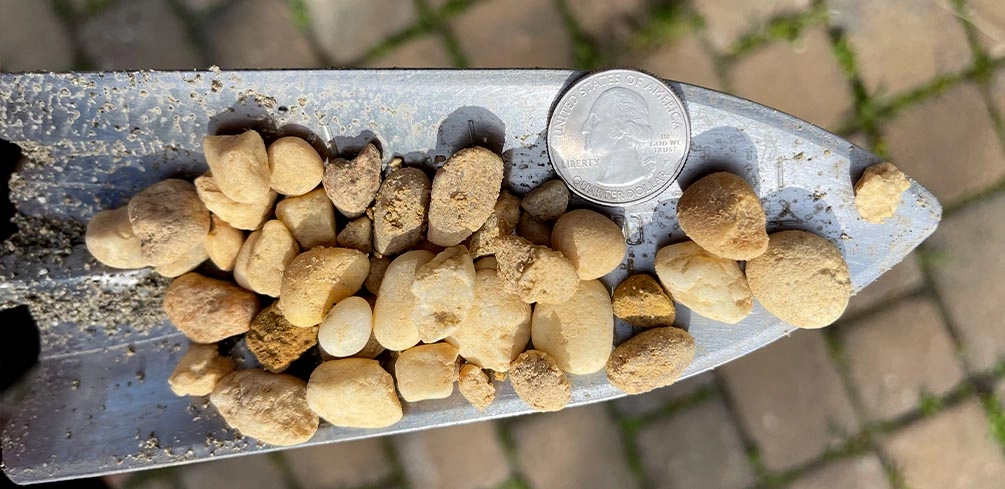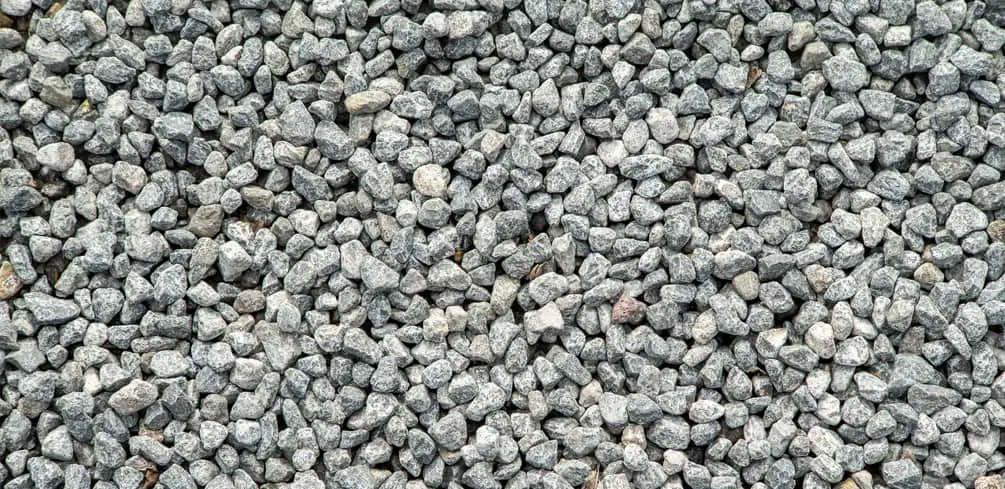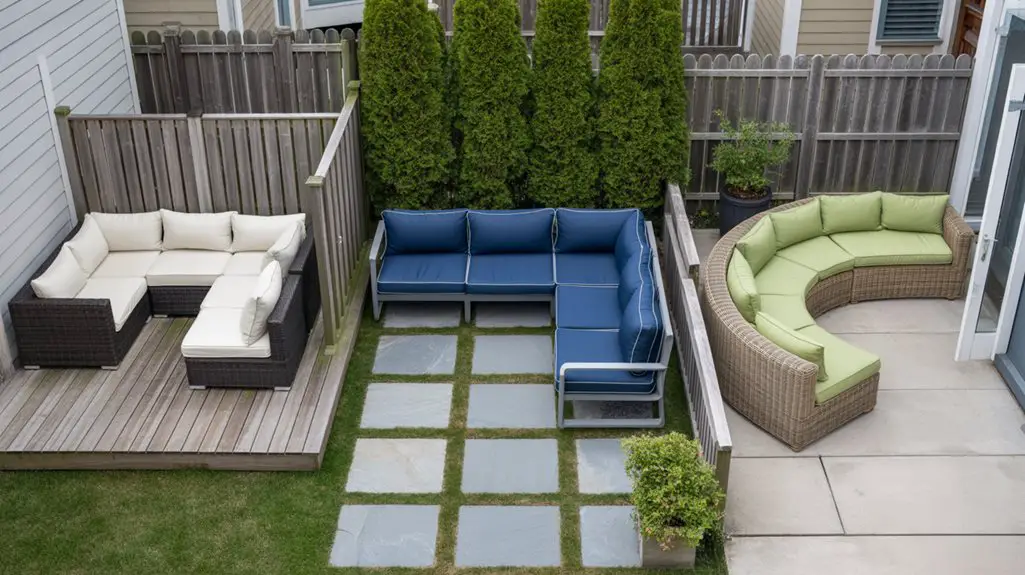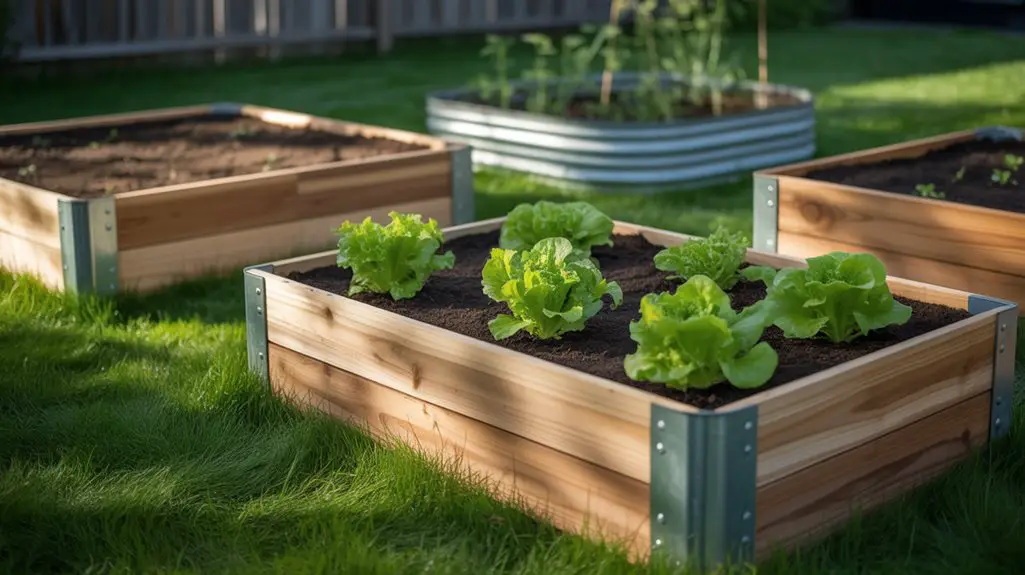Pea gravel is a safe playground surface, according to the National Playground Safety Institute. You need about 9 inches of pea gravel on a playground to break a 5 feet fall. Parents love pea gravel because it is readily available and an affordable option for playground surfacing.
When they hear pea gravel for a playground, every parents’ question is, ‘Is pea gravel safe for a playground?’ It is common for parents to have concerns about the safety of a child when on a playground.
Pea gravel is a relatively safe material to pour onto playground surfaces to break the fall when children are playing.
There are several features of pea gravel that make it better than regular gravel in the playground area. It is also aesthetically pleasing in the backyard when you pour it on a playground as a surfacing material.
This article will explore the attributes of pea gravel and how to install it as playground surfacing.
What is Pea Gravel?
Pea gravel is a type of gravel with smooth edges and a diameter of about 3/8 inch. The pebbles are attractive to look at, and they are not densely packed as regular gravel. Pea gravel is perfect for a playground surface as it is a type of loose fill material and it is used for the optimal safety of kids.
A child won’t leave a deep imprint on the grave when playing or walking on it. The loose pebbles provide some level of cushion when a child falls off a playset or a swing.
It is relatively low cost and easy to install, which is why it is a favorite among many parents. Also, to maintain pea gravel cost is low when the playground surface is prepared correctly.
It is not suitable for playground areas where toddlers play. This is because the small stones are considered a choking hazard.
Parents need to regularly check the gravel to ensure no sharp objects or sticks are lying in the pea gravel that could harm a child.

There are other loose fill options for playground surface materials other than pea gravel like:
- Wood Mulch
- Rubber Mulch
- Sand
How to Install Pea Gravel on a Playground
Parents need to observe a few essential steps when installing pea gravel to a playground area. You can’t just pour the pea gravel onto the playground area without any prior preparation to the ground.
It takes a while to do all preparations, but you won’t regret a few hours of preparation in the long term.
Step 1: Demarcate the Playground Area
It is essential to mark the playground area using a rope or twine to get a rough idea of the site you need to cover with pea gravel. Ensure the area leaves some space and playground equipment.
Also, ensure that you leave some space at the sides to pass through without stepping into the playground.
Calculate the area that you have a demarcation in square meters for easy calculation of materials. Also, ensure that the site is relatively flat to reduce the cost of digging the area or flattening it.
Keep in mind that a larger area will require more materials to adequately cover the ground and offer children a soft landing area.
Step 2: Prepare the Ground
You need to dig the area about 4-6 inches if you want the playground to be the same level as the rest of your lawn. You can dig 2-3 inches for playgrounds that are slightly higher than the rest of the backyard.
Be careful not to hit any pipes buried below the surface of your turf. Remove all the soil and turf to leave a clean surface.
You may want to uproot any protruding roots in the playground area for a smooth installation. Ensure the dig site is relatively flat because it will affect the playground’s appearance at the top when the installation is over.
You might want to remove any rocks on the
Step 3: Add Landscaping Fabric
Landscaping fabric ensures that weeds do not grow from the ground after installing pea gravel on top. It would be best to choose a reputable brand that can last for a couple of years without needing replacement or allowing weeds to grow.
The fabric should also be easy to drain during the wet seasons to avoid having stagnant water after the rains or snow.
Spread the fabric evenly across the playground and use stakes to hold it in place at the edges. The fabric won’t do its job when it moves because kids are actively playing.
It is better to secure it at the edges for confirmation to keep weeds out of the playground.
Check to ensure that there are no tears on the fabric after installation. Also, confirm that every edge is secured in place and that the fabric isn’t lost.
Overall, it is essential to double-check the installation to ensure that everything is as it should be.
Step 4: Add a Border
Parents must add a border around the playground area before pouring in the pea gravel. Kids tend to kick, throw, and spill the grave to the sides of the playground, and it can be hard to collect anything that spills around the grass.
Ideally, you can add a slab footpath around the playground as a border. That way, any spills fall on the pathway and can be swept back into the playground.
A border also prevents the loss of pebbles fast when kids are playing. You can opt for other types of barriers like a metallic border about ½ an inch high.
Remember to leave spaces for draining water from the playground when installing an edge.
Step 5: Add Pea Gravel
Once the landscaping fabric and border are in place, it is time to pour the pea graven onto the playground. It would be best if you bought enough gravel to fill the area you dug before during preparations.
It should be loosely packed, so do not press down the pea gravel after pouring it into the playground.
Use a rake to distribute the pea gravel evenly around the playground area until it is relatively even everywhere. Check the gravel to ensure there aren’t any sharp objects in it.
Double-check your work to make sure everything looks good.
You may want to give it a day or two so the loose fill materials will settle before adding playground equipment. This is especially true if you are using high height playground equipment, let the kids walk around for a few days.
The compacted stone will move less when the playground equipment is then added. I feel this is the perfect surface material for backyard playgrounds.
Maintenance
Pea gravel surfaces are cheaper for regular maintenance than grass and other surfacing materials for playground areas. The rocks can withstand all weather conditions without deteriorating or losing color.
If you are in an area that gets very cold it can make the rock become harder and if this is the case you may want to consider using rubber mulch instead. Rubber mulch usually made from recycled tires will not get hard when the cold winters hit your playground.
Pea gravel does not crack like standard gravel does when the snow thaws. You can consider adding shade over the playground because the gravel can get a bit hot during hot seasons.
You will need to rake the gravel daily to level it after the children are through playing. Also, you need to check the levels and add more gravel if you notice a reduction in the level. Check for sharp objects or harmful materials in the gravel when leveling it.
Is Pea Gravel Safe for Playgrounds?
Yes. Pea gravel is smooth, and it cannot scratch children when they fall on it. It is loose and provides adequate shock absorption to break a fall.
Again, if you have young children that may put it in their mouth then you wouldn’t want to go this route as it is a choking hazard.
Pea gravel consists of rocks, and you don’t need to worry about children getting in contact with toxins. There are no artificial colors or sealants applied to the rocks to enhance their beauty. It can become hot/cold depending on the weather if this is an issue rubber mulch or engineered wood fiber are great alternatives.
The material is affordable, and parents can afford to keep the playground area well surfaced all the time. Kids can get hurt on the playground when the gravel starts to thin out after a few months.
Parents should be able to refill the gravel to the ideal levels from time to time for children’s safety.
Conclusion
Pea gravel is an excellent surfacing material for playgrounds, and kids will be safe when they fall. It is simple to install pea gravel to the backyard playground area as a DIY project because there aren’t any special tools involved.
Most work is in the preparation on the ground before pouring the pebbles onto the playground.
It is imperative to add a landscaping fabric under the gravel to ensure weeds do not grow on the playground. A border will keep the gravel in the playground surfacing area and extend the period you need to refill the gravel.
Overall, pea gravel is a fun and attractive surfacing option for playground areas. It will add to the curb appeal of your backyard.
Please be careful and use at your own risk
None of the authors, contributors, administrators, or anyone else connected with BestPlaygroundSets, in any way whatsoever, can be responsible for your use of the information contained in or linked from these web pages.




